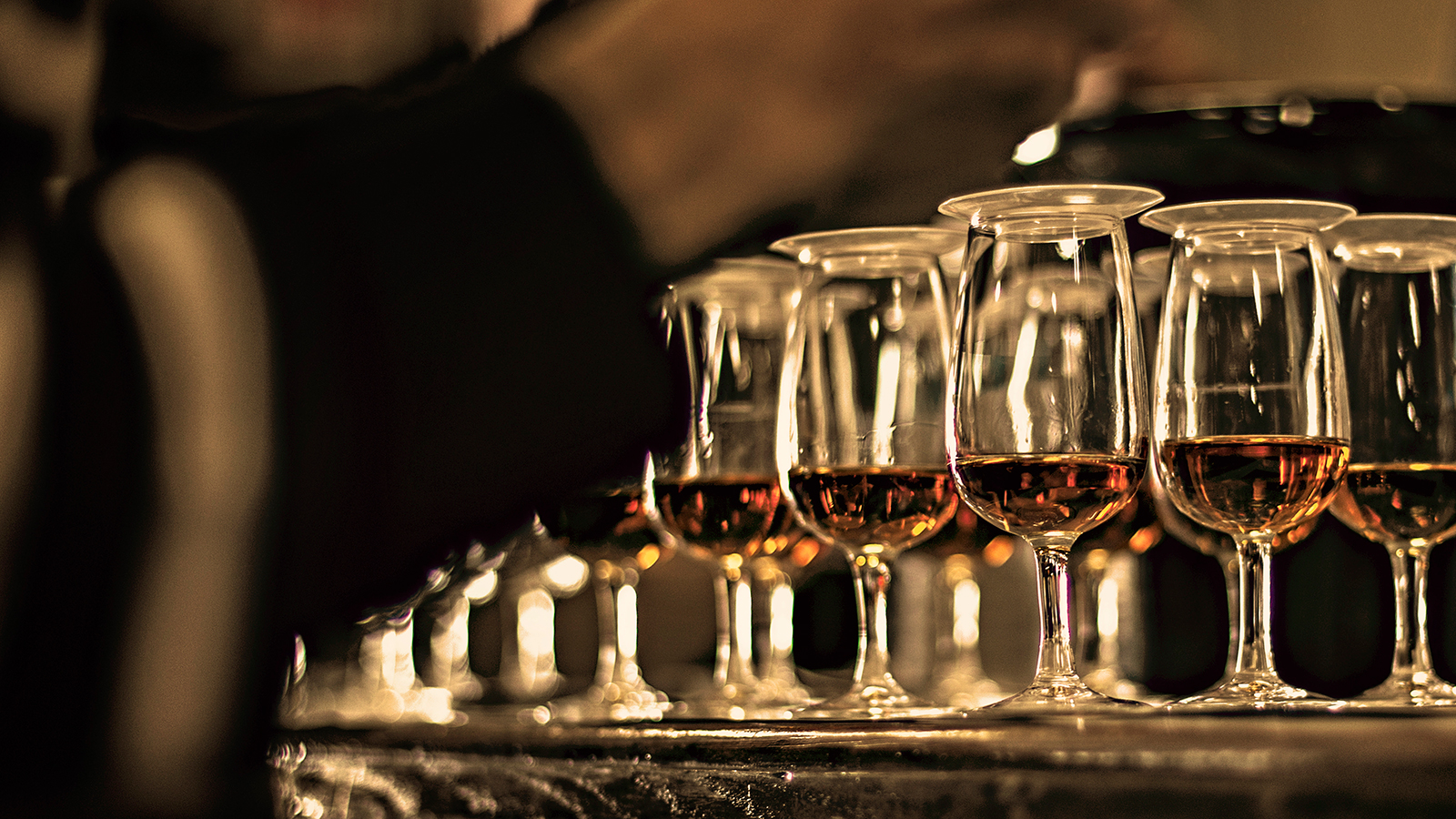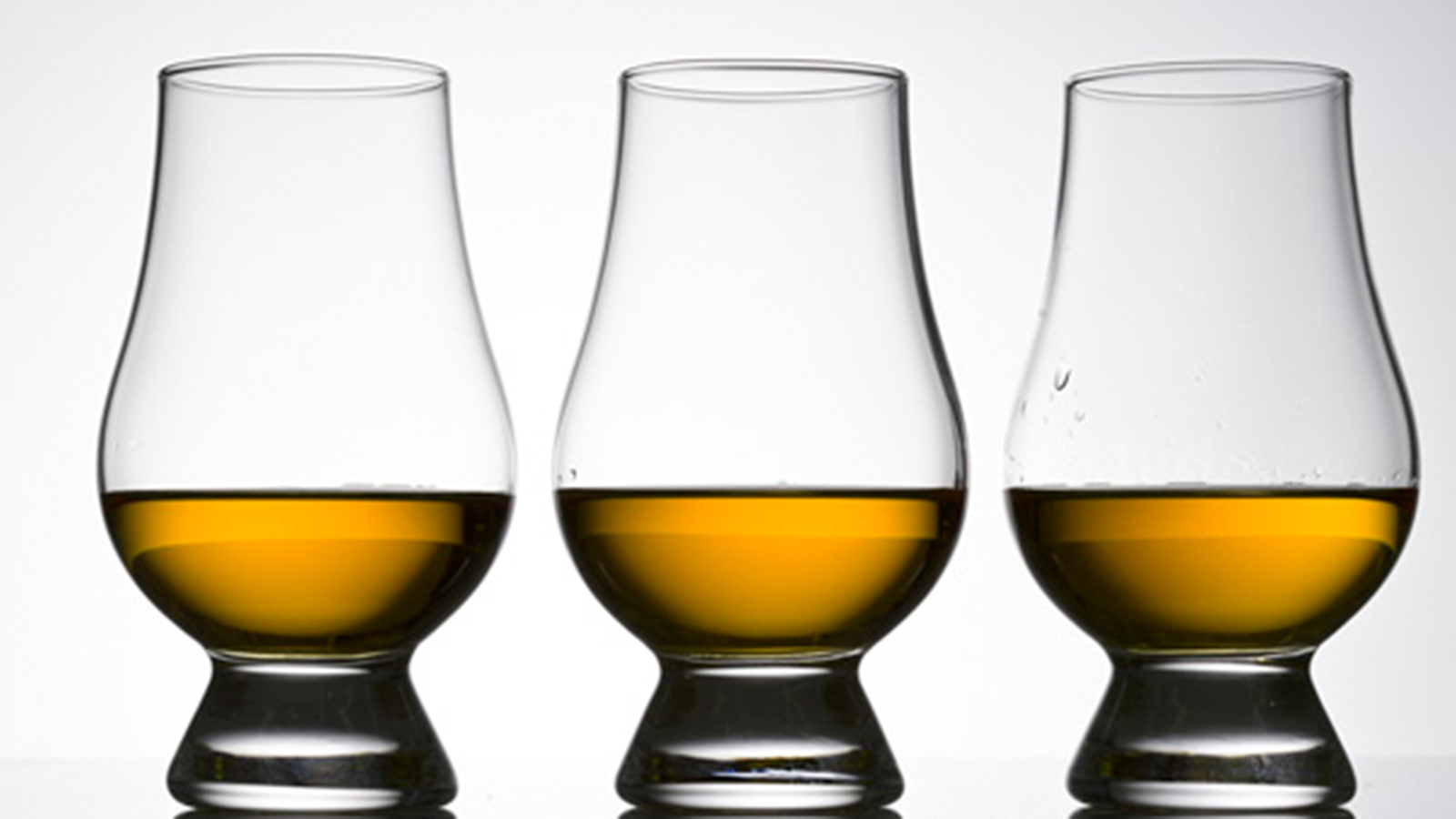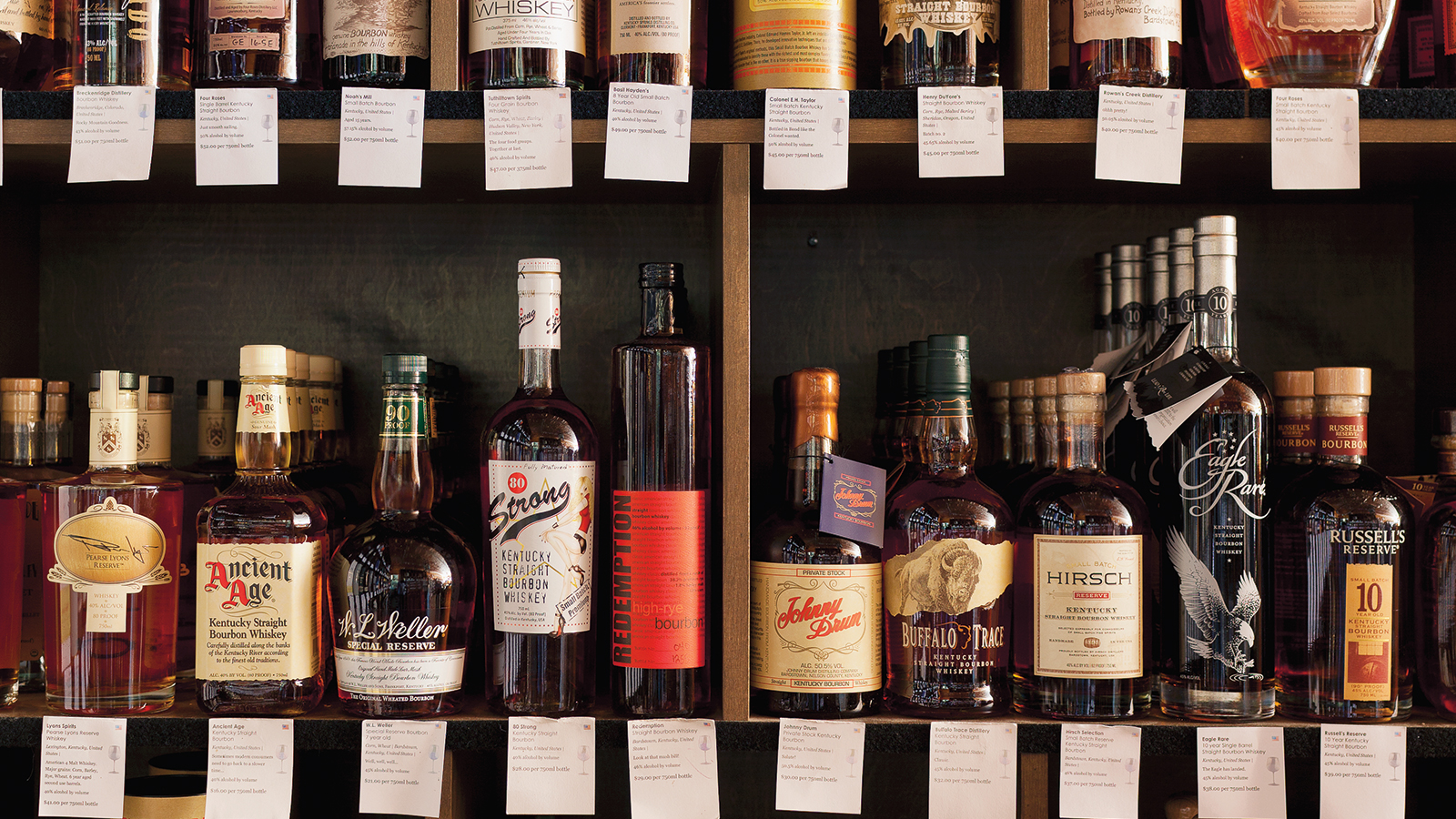
Enjoying whisky starts with tasting it. Tasting is more than drinking: it’s evaluating and understanding in order to better appreciate the whisky.
Sniff
Some research indicates your nose can identify 1 trillion different aromas, while your taste buds can only detect a fraction of that. So, the first step in tasting whisky is to smell, or nose, it. Give your glass a little swirl. Sniff gently to avoid the singe of the alcohol and keep your mouth slightly open.
Using a flavor wheel (like this one by Woodford Reserve, one of many wheels developed by specific brands) can help you identify some of the scents commonly found in whisky, but don’t be limited by these descriptors. Your sense memory contains thousands of distinct aromas, and what smells like fresh-baked cornbread to one person may seem more like corn on the cob to another.
When nosing whisky, avoid conflicting odors like smoke or perfume. Concentrate for a few minutes on sniffing and assessing. If you feel your nose getting tired, give it a rest and then return to the whisky. Over time, the whisky will take in air and its aromas may change. Spend some time with your dram and see how it evolves.
Sip
After a few minutes of nosing, take a sip of the whisky, hold it on your tongue, and let it spread throughout your mouth. Swallow, and breathe out through your nose. Assess the whisky’s mouthfeel—is it oily, creamy, thin, rich? Does it taste hot, sweet, spicy, acidic? See if you can taste some of the aromas you detected before or if new flavors emerge.
Continue nosing your whisky as you sip it, and feel free to add some water, starting with a few drops at a time. Dilution brings out new flavors and aromas, and it can also reveal flaws. Cask strength whisky often benefits from the addition of water.
Take a few minutes between sips to assess the finish—the flavors that linger after you’ve swallowed. Is the finish long or short?
Ask yourself if the whisky is balanced overall. Do the aromas, flavors, and structure work together? A great whisky tells a story from the first sniff to the final aftertaste.
Enjoy
The point of this exercise is to get more out of your whisky by understanding its component parts. But you are the ultimate arbiter. If you like the whisky, make a note about it so you can seek out similar whiskies in the future. If you don’t like it, try to figure out why.
In the end, whisky is about enjoyment. Drink it the way you like it, and don’t let anyone tell you that you’re wrong.
See how a professional scotch blender tastes whisky.
Burning Questions
Should I drink whisky neat, with water, or with ice?
Our editors had a spirited debate about this very question. We recommend trying whisky neat at first—no water or ice. Allow the whisky to express itself as its creator intended.
It’s perfectly acceptable to add water or ice if that’s what you prefer. Master blenders dilute their whisky down to 20% ABV, to reveal flaws and subtle flavors. We suggest adding water little by little—a pipette or eyedropper works great for this. Be sure to use neutral water that won’t adversely affect the whisky’s flavor. If you want to know exactly how much water to add to a glass of whisky, use this calculator.
If you want to chill your whisky, try using a large ice cube or ice ball that will melt slowly. Or if you want to avoid diluting your dram, there are whisky stones or steel balls that you can keep in the freezer.
What type of glass should I use?
The type of glass you drink from can affect your impression of a whisky. The wide bowl of a tulip-shaped glass like a Glencairn allows you to swirl the liquid a little to release aromas, while the smaller mouth helps concentrate them. You can avoid warming the whisky by holding the glass by its stem or base.
The NEAT glass and the Norlan glass are other options designed specifically to enhance your perception of aromas and taste in whisky.
Classic designs, like the simple rocks or Old-Fashioned glass, are wide enough to allow the addition of an ice cube or two and ideal for basic enjoyment.
No matter what type of glass you use, be sure it’s clean and clear. No one likes to mix last night’s Laphroaig with today’s dram of Maker’s Mark!
What whisky should I use in cocktails?
People used to shudder at the thought of using a single malt scotch or expensive bourbon in a cocktail, but that’s changing with the recognition that three-ingredient drinks like the Manhattan or Old-Fashioned—where whisky is the main event—demand high quality whisky. More complex recipes can benefit from top-notch whisky too. You don’t have to use your priciest bottles, but avoid using a whisky you would not enjoy on its own. Check out some recipes here.



